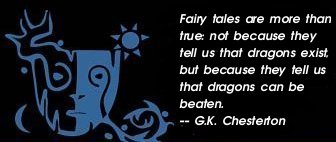
Little Yule
An exerpt used with the author's permission from
The Winter Solstice: The Sacred Traditions of Christmas
By John Matthews
With contributions by Caitlin Matthews
John and Caitlin Matthews, presenters at Mythic Journeys 2004 and 2006, teach worldwide and are the authors
of more than 70 books primarily about the Arthurian, Celtic, shamanic and spiritual traditions. John's best loved works include
The Celtic Shaman, Healing the Wounded King, and The Winter Solstice. Caitlin's books include
Singing the Soul Back Home, Celtic Devotional, and Sophia, Goddess of Wisdom. They are the
joint authors of The Western Way, The Encyclopedia of Western Wisdom, and The Arthurian Tarot.
In Sweden the Midwinter festival begins on December 13th, which is referred to as "Little Yule."
This also happened to be St. Lucia's Day and since at least the twelfth century this day has been
celebrated by the choosing of "Queen Lucy" from among the young women of the villages throughout Sweden.
Dressed in white and with a crown of lighted candles on her head, the Lucia sets forth through the
dark led by a mounted man and a group of maidens and "star-boys," who are said to represent the
demons and trolls conquered by the newly risen sun. Queen Lucy visits houses to bring blessings
and prosperity for the New Year. In some more isolated dwellings the youngest daughter of the
house will assume the role of Lucia for her family and circulate throughout the house wearing her
candle crown, accompanied by
carols and songs. This is followed by a breakfast celebrated in a room illuminated by dozens of
candles — yet another indication of the eternal importance of light at this time.
—more
on St. Lucia's Day.
In the northern lands in particular a great "Yule Candle" resembling the Pascal flame of the
Christian Easter is lit on the morning of Christmas by the oldest member of the household and
allowed to burn throughout the day. Sometimes the same candle will be rekindled every day of the
festival (usually until Twelfth Night). An ancient stone candle sconce, traditionally used to
hold the Yule candle during the late Middle Ages, can still be seen in St. John's College, Oxford,
though it is no longer used. In the eighteenth century, chandlers in Ripon, Yorkshire, sent their
customers large candles, and the coopers sent logs of wood. The antiquary R.T. Hampson, writing in
1841, says:
In some places candles are made of a particular kind, because the candle lighted on Christmas Day
must be so large as to burn from the time of its ignition to the close of the day, otherwise it will
portend evil to the family for the ensuing year.
The poor were wont to present the rich with wax tapers, and Yule candles are still in the North
of Scotland given by merchants to their customers.
At one time children in the village schools in Lancashire were required to bring each a mould
candle before...the Christmas holidays.
—MEDII AEVI KALENDARIUM, London, 1841
In our own time, as recently as 1926, houses in Campden Hill Square in London renewed the ancient
custom of placing lighted candles in every window in the house on Christmas Even as a memorial to the
magical significance of the season. By placing candles in our own windows (even if they are electric!),
we not only remember the older practice but show that we welcome the Midwinter spirits of the season
—be they the Christ Child, Mithras, or the Green Man.
It is from this practice that the idea of putting lighted candles on a Christmas fir tree probably
derives. However, there is a legend that tells of the spiritual revolutionary Martin Luther who,
after walking out one Christmas Eve beneath the stars, returned home with a young fir tree, which he
set up and decorated with candles to remind his children how Christ had so gloriously brightened the
Winter sky on this night of nights.
—John Matthews: The Winter Solstice, the Sacred Traditions of Christmas
with contributions from Caitlin Matthews
(from Chapter 3, pp.102, 103)
John and Caitlin Matthews have given their written permission to quote from The Winter Solstice.
This is copyrighted material and may be reproduced only with written permission.
John and Caitlin Matthews, presenters at Mythic Journeys 2004
and 2006, are the authors of more than 70 books primarily about the Arthurian, Celtic, shamanic and spiritual traditions. John's
best loved works include The Celtic Shaman, Healing the Wounded King, and The Winter Solstice. Caitlin's
books include Singing the Soul Back Home, Celtic Devotional, and Sophia, Goddess of Wisdom.
They are the joint authors of The Western Way, The Encyclopedia of Western Wisdom, and The Arthurian Tarot.
The Matthews also teach worldwide.
For information on the U.S. edition of their books, contact
Quest Books,
and for U. K. readers or for more information, their website is
Hallowquest.org.uk .
Return to Passages Menu
Subscribe to the Passages e-newsletter
|

